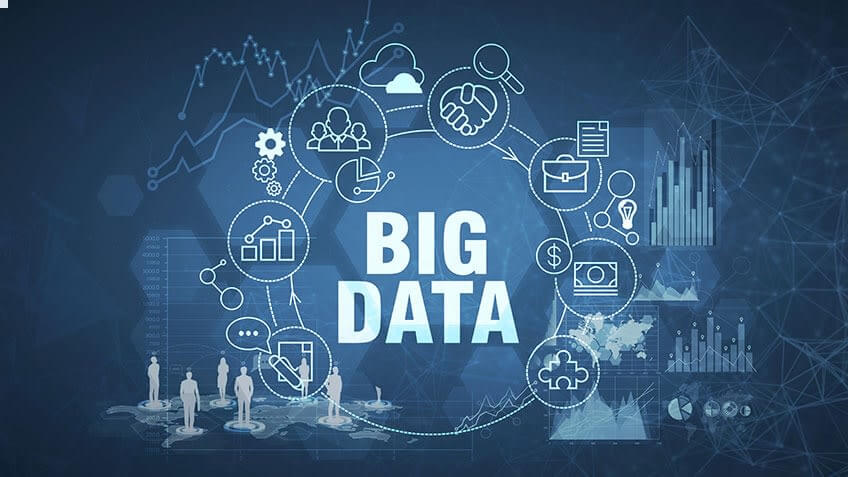Big Data Sekolahbahasainggris.co.id

The term “Big Data Sekolahbahasainggris.co.id” has become more than just a buzzword; it signifies the vast and intricate web of organized and unstructured data that inundates modern enterprises daily. Yet, the significance lies not merely in the type or sheer volume of data but also in how businesses leverage this data. The analysis of big data holds the potential to unveil insights that bolster decision-making, empowering businesses to embark on significant ventures with confidence.
Understanding Big Data Sekolahbahasainggris.co.id
Big Data Sekolahbahasainggris.co.id refers to data that is immense, rapidly evolving, or complex to the point of being daunting, if not impossible, to process using traditional methods. The ability to access and store copious amounts of data has long been in existence. However, the concept of big data gained prominence in the early 2000s when industry analysts encapsulated it with the now-standard definition of the three Vs:
1. Volume:
Businesses today gather data from diverse sources such as transactions, Internet of Things (IoT) devices, machinery, social media, videos, photos, and audio. Storing such vast quantities of data would have been cost-prohibitive in the past. However, advancements such as data lakes, Hadoop, and cloud computing have made storage more affordable, alleviating this challenge.
2. Velocity:
With the expansion of the Internet of Things, data now flows through businesses at unprecedented speeds, necessitating rapid processing. These data streams, whether from RFID tags, sensors, or smart meters, require near-real-time management.
3. Variety:
Data manifests in myriad formats, encompassing unstructured text documents, emails, videos, music, financial transactions, structured digital data in traditional databases, and unstructured digital data in various files.
In the realm of big data, SAS introduces two additional factors to consider:
4. Variability:
Information streams are inherently capricious, subject to frequent changes and wide variations in speed and assortment. Organizations must comprehend the ebb and flow of data sharing and effectively manage daily, seasonal, and intermittently triggered data loads.
5. Veracity:
The quality of data, termed accuracy, is crucial. Given that data originates from diverse sources, it must be linked, merged, cleaned, and transformed. Business correlations, hierarchies, and multiple data links must be established and correlated to prevent data from spiraling out of control.
Why Big Data Sekolahbahasainggris.co.id Matters
The value of Big Data Sekolahbahasainggris.co.id extends beyond its sheer volume. The true worth lies in how businesses harness it. Through data analysis, enterprises can:
- Enhance operational efficiency
- Streamline product development processes
- Discover new avenues for revenue and growth
- Facilitate informed decision-making
Big data analytics empowers businesses to:
- Identify the root causes of errors, issues, and flaws in real-time
- Detect anomalies more rapidly and accurately than human observation allows
- Improve patient outcomes by swiftly deriving insights from medical imaging data
- Recalculate entire risk portfolios within minutes
- Enhance the precision and adaptability of deep learning models for classification and adaptation to changing variables
- Detect fraudulent activities before they impact the organization

The Evolving Landscape of Big Data
The management and analysis of big data are reshaping how businesses harness and interpret vital information. Understanding the impact of big data involves:
- Fostering a data-driven company culture: Discover how various devices, from cars to wearables, generate significant volumes of big data. Learn about the principles of becoming a data-driven organization and explore effective strategies employed by other businesses to navigate big data challenges.
- Navigating the Functions of Big Data: Big Data traverses diverse locations, sources, systems, owners, and users, necessitating careful consideration. To harness this deluge of data, which includes unstructured, semi-structured, and conventionally formatted data, businesses must follow five essential stages:
- Define your big data strategy
- Identify sources of big data
- Manage, access, and store data effectively
- Analyze the data for insights
- Make informed decisions based on data-driven insights
Big Data Across Industries
Big data isn’t confined to specific sectors; it permeates various industries. The onslaught of the Internet of Things (IoT) and interconnected devices has led organizations, irrespective of their size, to collect, manage, and analyze vast amounts of data. The insights derived from big data hold immense potential for every industry, providing unprecedented opportunities for growth and efficiency.
In conclusion, Big Data Sekolahbahasainggris.co.id represents not just a sea of information but a treasure trove of insights waiting to be unearthed. As businesses navigate this landscape, the ability to harness, analyze, and leverage big data will be a defining factor in their success in the ever-evolving digital economy.

